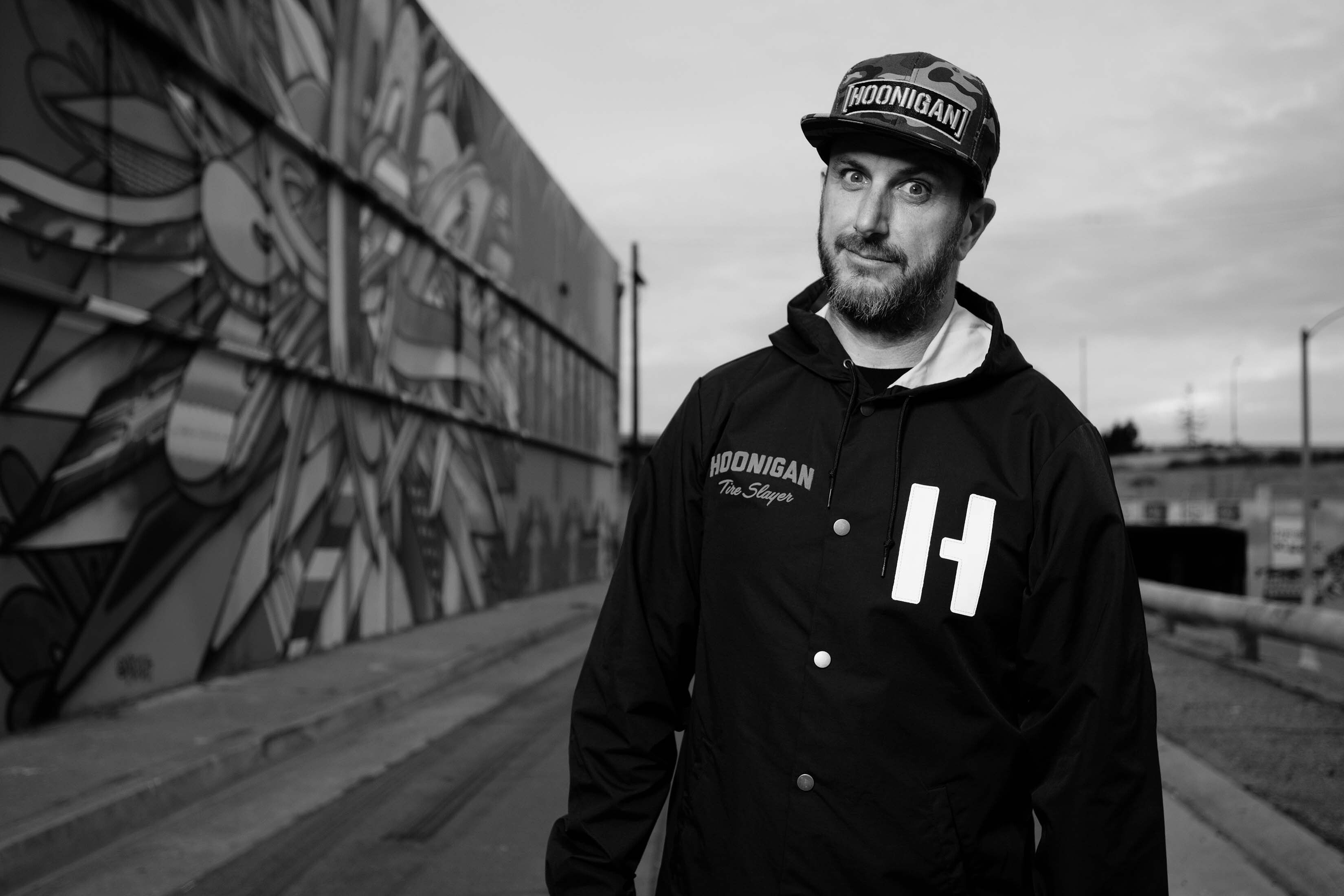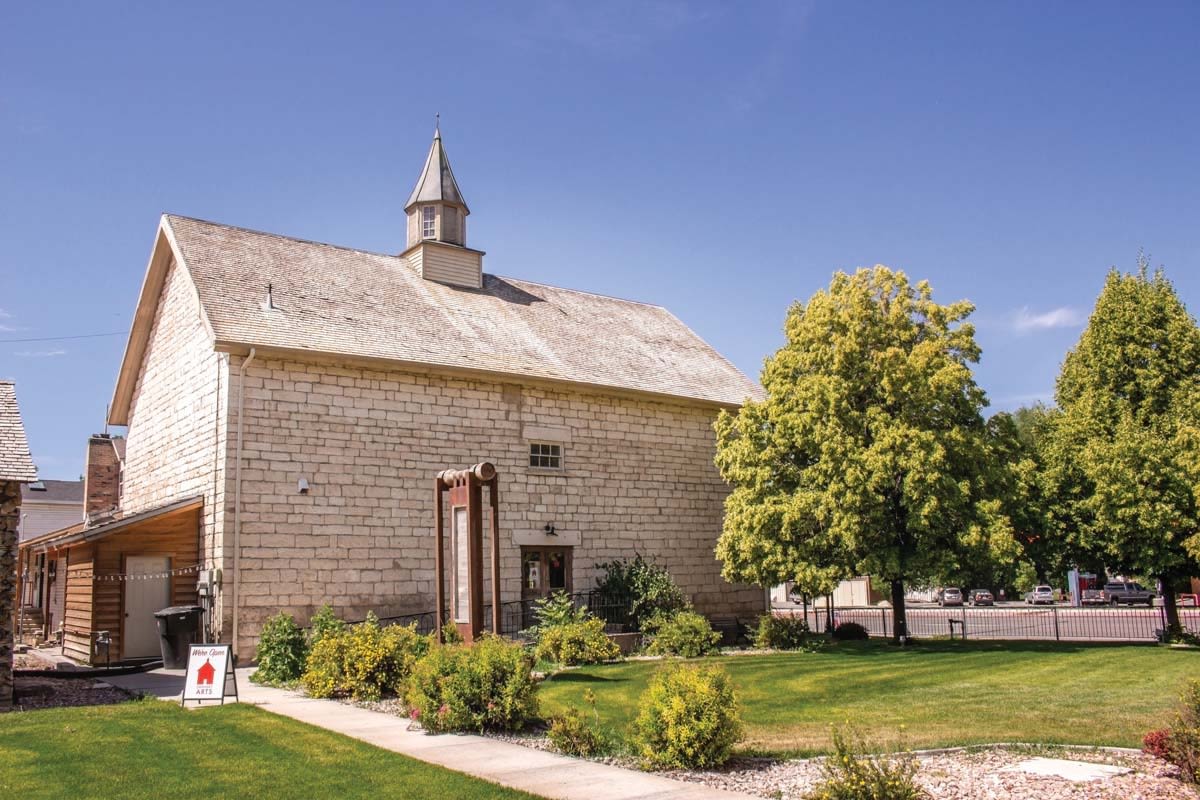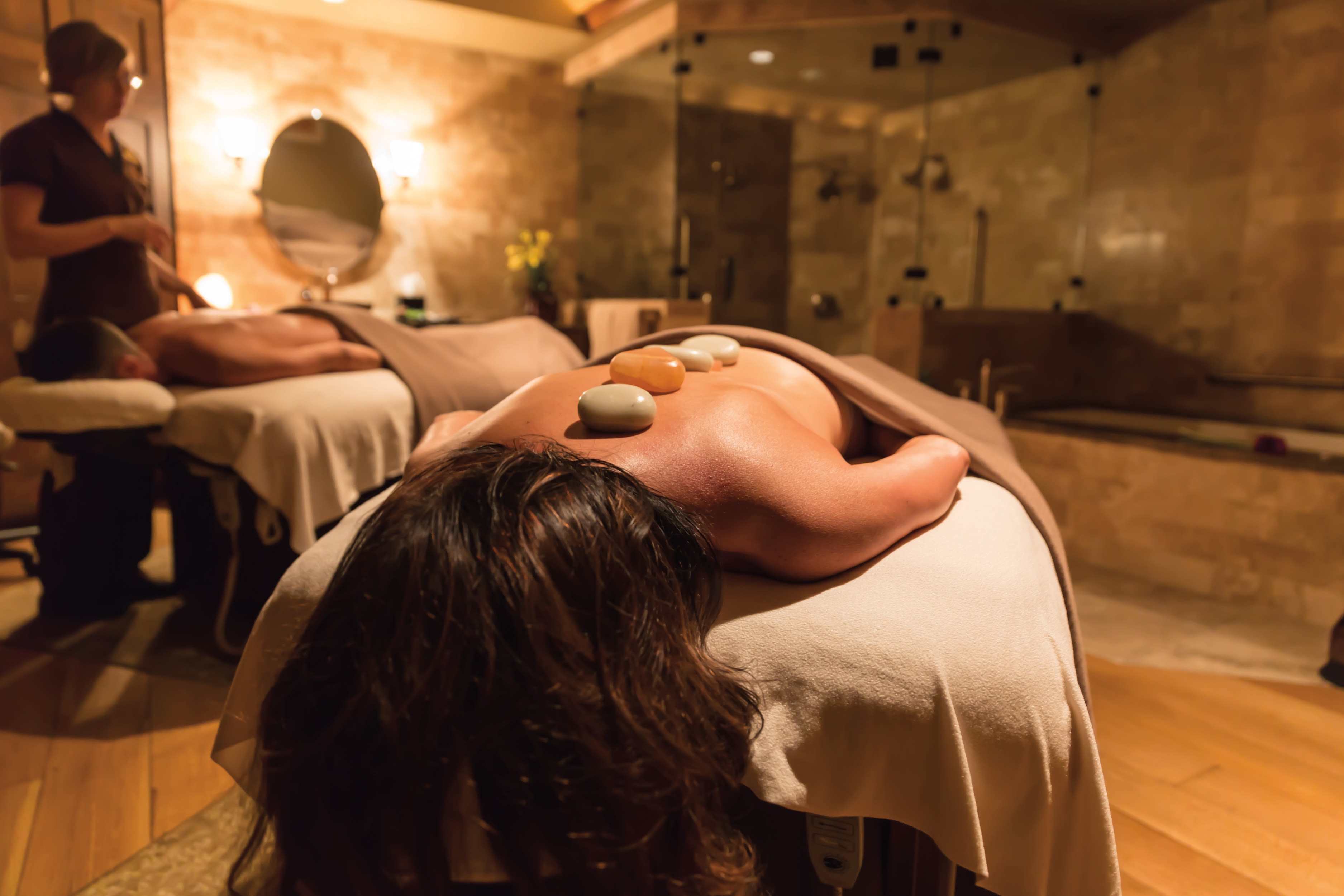5 Yoga Poses for Skiers and Snowboarders
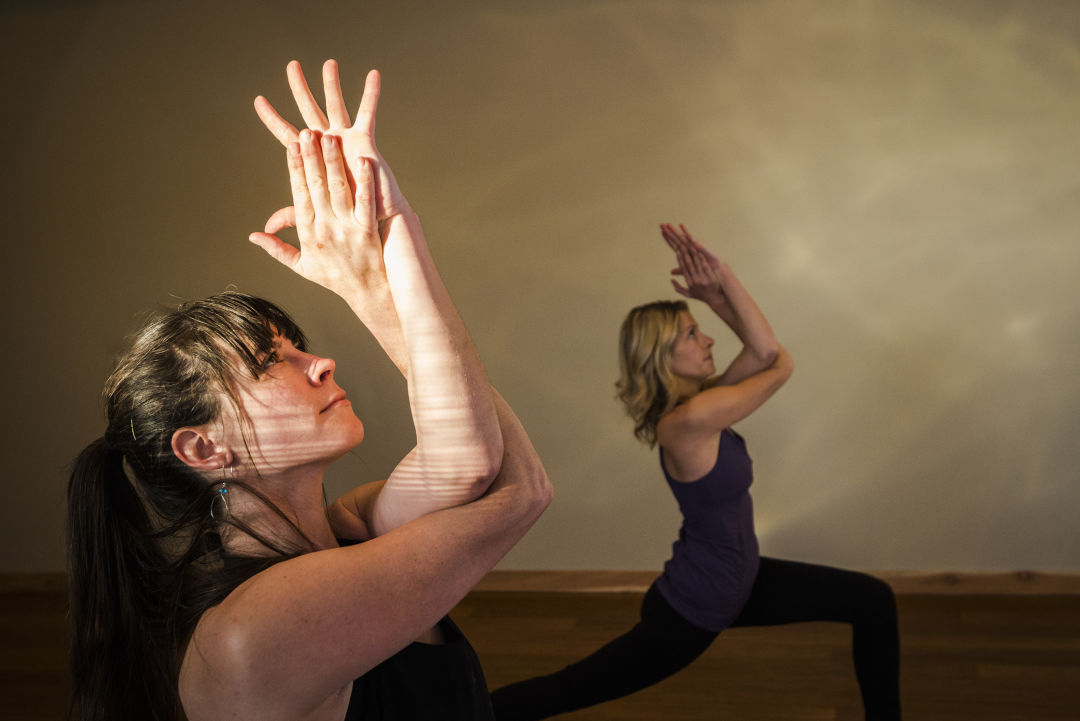
Julia Geisler of Park City Yoga Adventures at The Mine Bouldering Gym.
Image: Jeremiah Watt Photography
Almost everyone who tries skiing or snowboarding for the first time will complain about how sore they are, and how they were using muscles they didn't even know they had. Even after you've adjusted and can comfortably cruise down the mountain without much effort, skiing and snowboarding still take a tremendous amount of work for your body, particularly your lower half. Keeping your body well-aligned and flexible can be the key to injury prevention and improved performance. Yoga, with its slow, meditative stretching, can be the perfect complement to the high-intensity experience of coming down the slopes. Even working your way through just a couple of yoga poses can help improve your overall flexibility, muscles strength, balance, and energy.
Here, Julia Geisler, owner of Park City Yoga Adventures (and an avid snowboarder), shares five excellent yoga poses both skiers and snowboarders can benefit from as a pre- or post-riding routine. Try to hold each pose for several breaths, keeping your breathing steady. Don’t push too hard—just enough to get a good stretch.
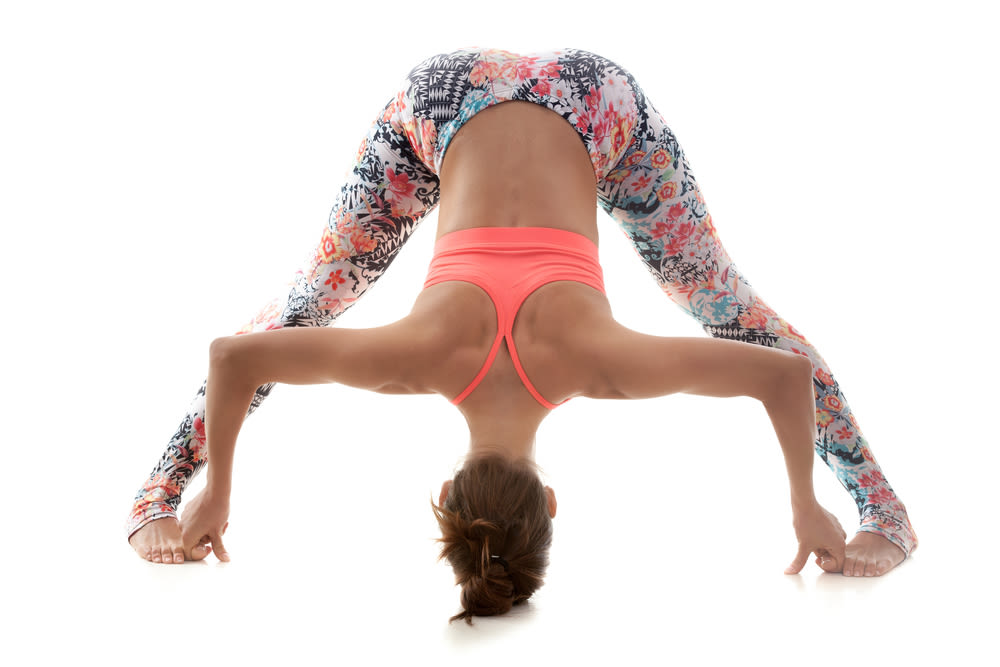
Wide legged forward fold
Image: Shutterstock
Wide Legged Forward Fold
Wide legged forward fold is an excellent way to strengthen and stretch the inner and outer legs as well as the ankles. If you have lower back issues, use caution, easing off the fold if you feel any pain. To get into the pose, move your legs 3 to 4½ feet apart, with your feet parallel. On your inhale, lengthen your spine and exhale to fold forward. You can place your hands on the floor in the middle or grab your toes.
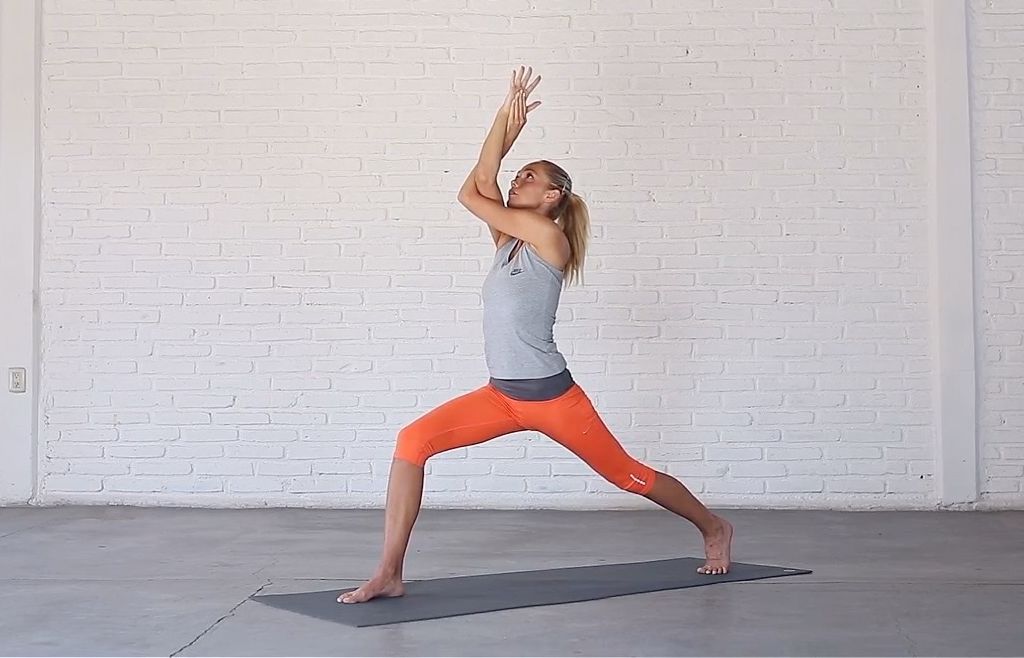
High lunge with eagle arms
Image: Shutterstock
High Lunge with Eagle Arms
High lunge, or crescent pose, can help alleviate knee and lower back pain while stretching the hamstring and hip flexors, opening up the hips and strengthening the feet, ankles, legs, and glutes. Adding the eagle arms variation works the upper back, shoulders, and wrists while challenging your balancing skills. Get into the position by stepping your foot forward and lowering into the high lunge. Keep your front thigh parallel to the mat and make sure your knee is directly above your ankle and in line with the second toe. Twist the arms together so the palms are facing each other and raise the arms up. Hold for five breaths on both sides.
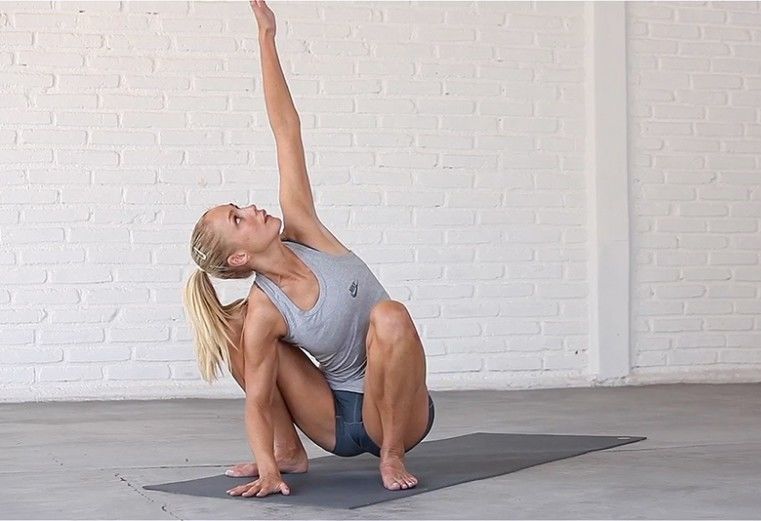
Yogi squat with twist
Image: Shutterstock
Yogi Squat with Twist
This pose works to increase spinal flexibility, alleviates lower back pain, opens up the hips, and stretches the ankles, groin, and lower back. To get into the pose stand with legs hip-width apart, fold forward, and heel-toe your feet to the edge of the mat. Bend the knees, come into the squat, and bring your upper body between your thighs with palms together, pushing your triceps out to open up the hips. To twist, place your right hand on the mat and sweep the left arm up, twisting from the base of your spine. Hold for 5 breaths and switch sides.
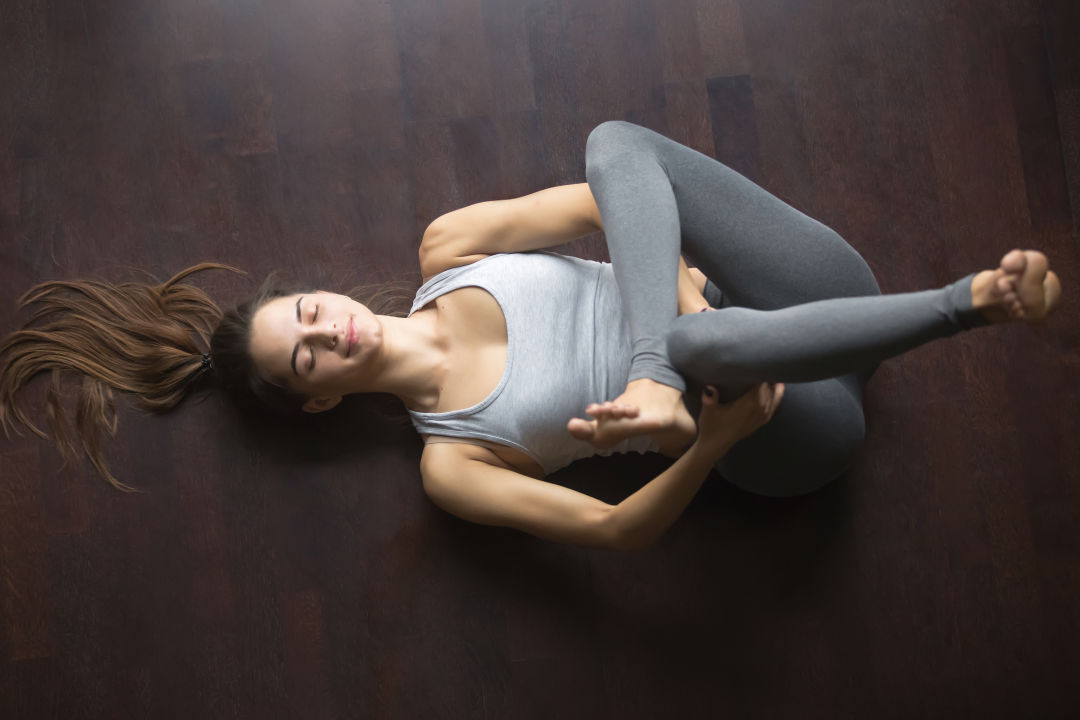
Reclined pigeon/figure four
Image: Shutterstock
Standing or Reclined Figure Four
You can take this pose standing or reclined to relieve pain and discomfort in the hips and strengthen thigh muscles, hip, knee, and ankle joints as well as increase your range of motion. If standing, pick up your right foot and bend it, placing the ankle on the knee in the shape of a figure four. Lower down slightly and place your palms together at the heart. If you’d rather lay on your back and take the pose, that works as well. Repeat on both sides.

Supine twist (without ankles crossed)
Image: Shutterstock
Supine Twist
The supine twist stretches your glutes, chest, and obliques while improving spinal mobility. Lay on your back with knees bent and feet as wide as the yoga mat. Spread your arms wide, slowly drop both your knees to one side and bring your gaze to your fingers on the opposite side. Cross the ankle over the outside of the knee (this is particularly good for snowboarders).




